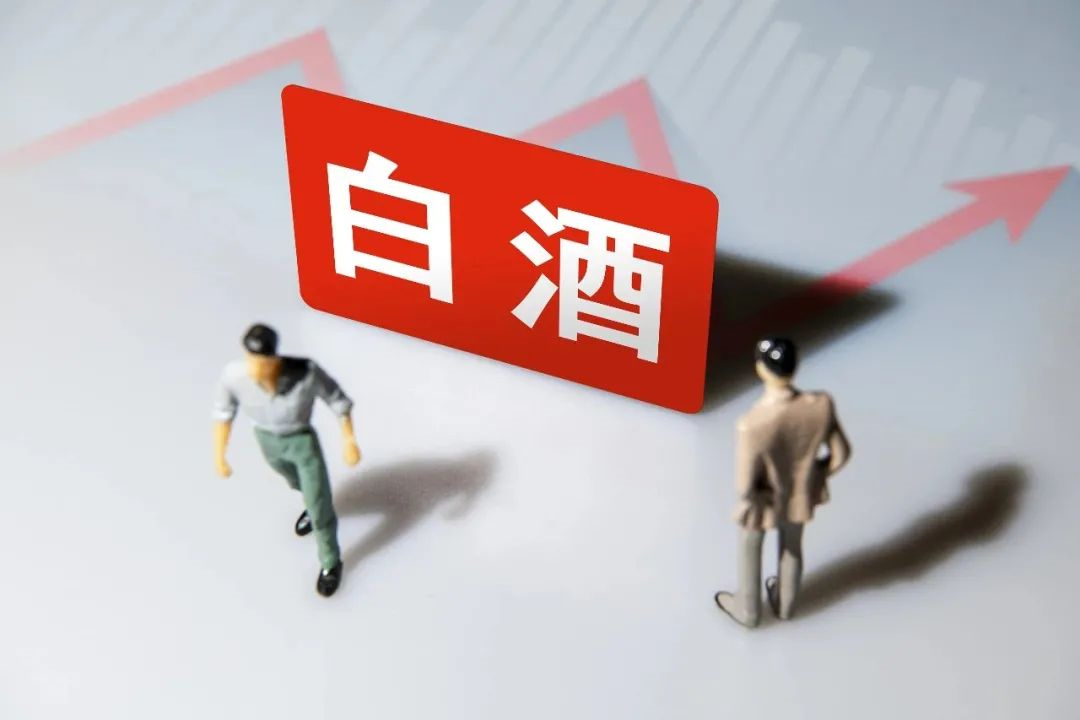*This article is reproduced from the Autocarweekly WeChat Official Account
Author: Karakush
Recently, there has been a saying that is quite popular: the “baijiu-ization” of the automobile industry.
A few days ago, renowned economist Guan Qingyou (dean of the Research Institute of Finance and Economics) said at an automobile forum that the current automobile industry is showing development characteristics similar to that of the baijiu industry. New energy vehicles, like sauce-flavored baijiu in the baijiu industry, are on the rise against the trend.

The overall sales volume of the entire baijiu industry has been declining since 2016, while the market share of sauce-flavored baijiu has increased by 50%. Similarly, since 2018, the entire automobile industry has been shrinking, the number of vehicle ownership is approaching saturation, and slight positive or negative growth is expected to be the norm in the future. Meanwhile, the market share of new energy vehicles has grown from less than 2% to over 10% this year. This situation will continue, and the rise of new energy vehicles cannot be stopped.
In our view, this, while not exactly the same, is utterly irrelevant. Look at the young man with a nose and eyes, Xiao Zhan also has a nose and eyes, so the young man must also be a top idol, hehe.

However, the “baijiu-ization” theory has still sparked intense discussion in some stock communities. Stock investors are sensitive to the rhetoric of economists. Although the target is sales volume, it sounds very capital-oriented, as if it were implying crazy growth after baijiu. What can we invest in after baijiu? New energy vehicles!
-
New energy vehicles are without a doubt the focus of capital. They are not only red hot in the primary market for investment and financing, but also follow the trend in the secondary market. Not only Tesla and NIO on the US stock market, but also the originally simple domestic automobile sector have begun to change. Some new energy vehicle stocks really carry the aura of “baijiu-ization”, at least they have a few things in common:
-
They belong to the “necessities of life, such as clothing, food, shelter, and transportation” that are in demand every day.
-
The industry has a national bond-like faith in the certainty of the racing track.
-
Leading stocks can break through barriers and achieve financial freedom with a single force; the expectations for short-term doubling of stocks of small and medium-sized companies are high.
-
Merely based on concepts, they are capable of incubating daily limit-up boards, and can even drive non-core business companies to take off.
-
They attract many inexplicable companies to cross-border production of cars and baijiu, and despite not selling a single car or bottle of baijiu, they can still soar.
-
Positive news defies reason and no one knows how to feel sorry for people.
-
Institutions and leveraged capital groups engage in insider trading.
-
Fundamentals cannot keep up with high stock prices, and they are daily questioned for their severe bubbles. However, everyone is still very tolerant of high valuations.# Eye-catching Kangoo Car Stock Sets Record High with a Market Value of Over 100 Billion Yuan
This week, the stock price of Kangoo Car Inc., a rising star in the automotive industry with a unique character, has reached a new record high, exceeding 83 yuan at one point, then experiencing a slight drop the day before yesterday, and finally stabilizing at 79 yuan yesterday, with a total market value of over 100 billion yuan.
What level is a market value of 100 billion yuan? The average market value of the automotive industry is 25.6 billion yuan. Among A-share vehicle stocks, the leading ones before Kangoo Car Inc. include BYD, the number one company with a market value of 700.6 billion yuan, followed by Great Wall Motor and SAIC with market values of 412.5 billion yuan and 256.9 billion yuan respectively. Then comes Chang’an and GAC with market values of 142.6 billion yuan and 133.9 billion yuan. A market value of over 100 billion yuan is not a leader but a prominent contender.
Friends who are familiar with the industry know that Kangoo’s strength in terms of scale, technology, brand reputation, financial indicators, and so on, still has a long way to go before reaching the top level.
The recent stock price surge seems to have no obvious reason. Kangoo Car Inc. had issued an announcement on Monday night, stating that the accumulated deviation of its closing price from the normal range on three consecutive trading days had reached 20%. After conducting a self-check, the company stated that everything was normal, and there was no significant change.
The only significant change goes back to April when the company reached an official partnership with Huawei’s HiCar to sell its new energy vehicle model, SF5, through the Huawei channel. There is no need to analyze the potential for competition of this car. The main reason for the surge in market value is the combination of new energy and the “Huawei concept”. Compared to the normal level of around 7-8 yuan last year, the stock has risen by as much as 10 times, i.e., a ten-fold increase in one year.
During this year’s shareholders’ meeting, Zhang Xinghai, the founder and actual controller of Kangoo Car Inc., said that “the current stock price is not too high.” At that time, the stock price was around 60 yuan. It is indeed not too high compared to BYD, a leader in new energy vehicles. However, the stock prices of Great Wall Motor, Chang’an, and GAC, which were 45 yuan, 26 yuan, and 12 yuan respectively, have fallen into the dust.
The focus of the shareholders is whether new energy vehicles, which seem to have good prospects and profitability, could become the next Chinese Maotai, a well-known liquor brand, and be as lucrative as the latter. Many devoted fans of Maotai feel insulted and do not think that new energy vehicles are worthy to be compared to their favorite liquor. In addition to both being hot tracks nowadays, the two have fundamental differences in their business models.
First, sauce liquor is a scarce product. Due to its complex production process, long production cycle and low alcohol production rate of 20%-30%, it is naturally scarce. Well-known sauce liquor brands like Maotai, Xijiu and Langjiu, usually have a production cycle of one year and a storage period of at least four years. Despite the expansion of production capacity across small, medium and large distilleries, there is still a huge supply gap.Based on scarcity, high-end positioning and high premium can be naturally developed. Although the production capacity of sauce wine in the liquor industry accounts for only 7%, its sales revenue and profit margins account for 21% and 43%, respectively. The essence of the premiumization of sauce wine is a kind of consumption upgrade, and its sales rely on brand power. It is also a good high-profit business itself. The cost is only grains and water, and the gross profit margin can reach 90% and the net profit can reach 50%. Moreover, it is not afraid of inventory, and the longer it is stored, the more valuable it becomes.
New energy vehicles do not have any of the charming features mentioned above.
Its prospects lie in achieving a new round of popularization under the promotion of policies. Except for being hindered by supply chain issues such as chip shortages at present, it may be scarce for a while, and everyone can take this opportunity to gracefully raise prices. Normally, there is no emotion involved in mass offline production. And the industrial features are that the higher the popularity, the cheaper it is.
Even if they become electric, the basic business rules will not change, such as cars will not actively pursue scarcity, and profitability lies in large-scale amortization. Therefore, the more the better. Even Bentley wants to sell a little more, while the gross profit margin of a general car can only reach 30% at best. Appreciation is impossible, and the whole industry is making every effort to reduce the depreciation rate of vehicles. This is even more true for electric vehicles.
Today, the industry generally expects sales to reach 20% by 2025, and rapid growth can be maintained within 5-8 years. This is based on the small goal of carbon neutrality and the tilt of policies. Looking at a longer timeline, the overall growth will still slow down, because cars are long-term consumer goods and are restricted by demand. However, white wine, especially high-end white wine, is no longer regarded as a cyclical sector driven by high prosperity and demand.
At this crucial juncture, “white wine-izing” means that the people who used to speculate in white wine may start speculating in new energy, and funds are likely to follow the white wine model to hold targets in the new energy sector. However, it will not be a long-term trend like white wine. Just like a few years ago, real estate was also described as having white wine characteristics, and then there was no more follow-up.
This is quite sad. Everyone will use white wine as a benchmark. This is not to look down on white wine. Although I am not quite willing to acknowledge that “the scarcity of high-end white wine is a symbol of China’s rise” or “it represents an achievement of the 40 years of reform and opening up” and other statements, it does not prevent it from being a good business.
Different companies should have different business models, and as long as a company can continue to maintain profitability, enhance competitiveness, and maintain opportunities for iteration, it is a good business model worth long-term optimism.股友们对白酒的偏执,很可能是因为多年以来,无论自身业绩还是资本市场表现,白酒是极少数不太辜负人民的板块。其赛道确定性,其实是基于一种非常稳定的「茅台文化」。
The obsession of investors with Baijiu may be due to the fact that it has been one of the few sectors that hasn’t disappointed the public in terms of both business performance and capital market returns over the years. Its certainty of trajectory is based on a very stable “Maotai culture”.
在白酒圈最容易引发论战的担忧是,年轻人不喝白酒了,未来怎么办。这是绝了需求的后路。一些爹味观点,比如贵州茅台前董事长季克良认为,年轻人不喝茅台是还没到时候,是小孩子不懂事,不晓得需要好酒喝。虽然看上去很像过来人的经验,但是结论是很难被证实的。
The most controversial concern in the Baijiu industry is that young people are not drinking Baijiu anymore, which will lead to a dead-end of demand. Some conservative opinions, such as that of Ji Keliang, former chairman of Guizhou Maotai, believe that young people not drinking Maotai is just because it’s not time yet, as they are young and don’t know they need good liquor. Although it looks like an experienced opinion, the conclusion is hard to prove.
眼下,年轻人是消费白酒的。根据 CBNData《2020 年轻人群酒水消费报告》,90/95 后是酒水消费市场中唯一消费占比提升的人群,而白酒在他们的酒类开销中不可撼动的领先,占比远超热门的果酒和啤酒。与此同时,一个普遍的现象是,买酒的人不喝,喝酒的人不买。
Currently, young people are the ones consuming Baijiu. According to the CBNData “2020 Young People’s Alcohol Consumption Report,” the post-1990s and post-1995 generations are the only group with an increasing proportion of alcohol consumption in the market, and Baijiu is leading their alcohol spending, far exceeding popular fruit wine and beer. Meanwhile, it is common to observe that drinkers do not buy the liquor, while buyers do not drink.
年轻人的白酒,不是饮料消费,而是社交需求,送长辈送领导设坛摆席宴宾客诸如此类。「茅台文化」,本质是在桌上继续维护权力秩序的一种仪式感。口味是会变的,需求是会变的,但是权力和等级是永恒的。白酒市场的稳定性在这里。
For young people, Baijiu is not just a drink, but a social need, such as giving as present to elders, leaders or as a special offering at banquets. The “Maotai culture” essentially maintains a sense of hierarchy on the table. Taste can change and needs can vary, but power and hierarchy are eternal. The stability of the Baijiu market lies in this.
在这一点上,新能源汽车或许是真的悲剧。年轻人是真的可以不买车的。
In this sense, new energy vehicles may indeed face a tragic situation, as young people can really choose not to buy cars.
This article is a translation by ChatGPT of a Chinese report from 42HOW. If you have any questions about it, please email bd@42how.com.